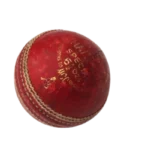Playing cricket is thrilling, but understanding the playing conditions is essential. Key equipment like the bat, ball, gloves, batting pads, helmet, and other gear are necessary for a safe game. The MCC provides a foundational guide, or ‘Cricket ABCs’ to help new players grasp the basics and enjoy the game fully.
- Team: Cricket is played between two teams, each with 11 players.
- Umpire: Umpires are the officials who oversee the game. Typically, two on-field umpires manage the game, with a third umpire handling video replays and a match referee ensuring the rules are followed.
- Pitch: The game is played on a large oval field with a rectangular 22-yard strip in the center, known as the pitch.
- Toss: At the start, the umpire calls the two team captains for a coin toss. The captain who wins the toss decides whether their team will bat or bowl first.
- Batting and Bowling: In each inning, one team bats while the other bowls. The batting team aims to score as many runs as possible, while the bowling team tries to limit runs and take wickets to dismiss batters quickly.
Playing Cricket - Wickets: Each end of the pitch has a set of stumps topped with bails, known as a wicket. The batting team strives to protect their wicket while scoring, while bowlers aim to hit the wicket to get batters out.
- Scoring Runs: Batters score by hitting the ball and running between wickets. Boundaries offer additional scoring options, with 4 runs awarded when the ball crosses the boundary on the ground and 6 runs if it goes over without touching the ground.
- Dismissals: A batsman can be dismissed in 10 ways, including being bowled, timed out, hit wicket, caught, leg before wicket (LBW), run out, stumped, handling the ball, hitting the ball twice, or obstructing the field.
Cricket Ball - Over: The game is divided into overs, each consisting of six legal deliveries. In test matches, 90 overs are bowled daily over five days. In one-day internationals, each team bowls 50 overs, and in T20s, each inning has 20 overs. Recently, T10 leagues, with just 10 overs per inning, have become popular.
- Results: The team batting first sets a score, and the other team aims to chase it. For example, if India scores 300 in a one-day match, Australia’s target would be 301. If Australia reaches 301, they win by wickets; if they’re all out for 200, India wins by 100 runs. For example: India and Australia playing for a one-day international. India Score: 300 runs, Australia target would be: 301. If Australia scores 301 runs then they will be the winner by wickets. On the other hand, Australia all out in just 200 runs, then India won by 100 runs. For more information.
Post Views: 127







